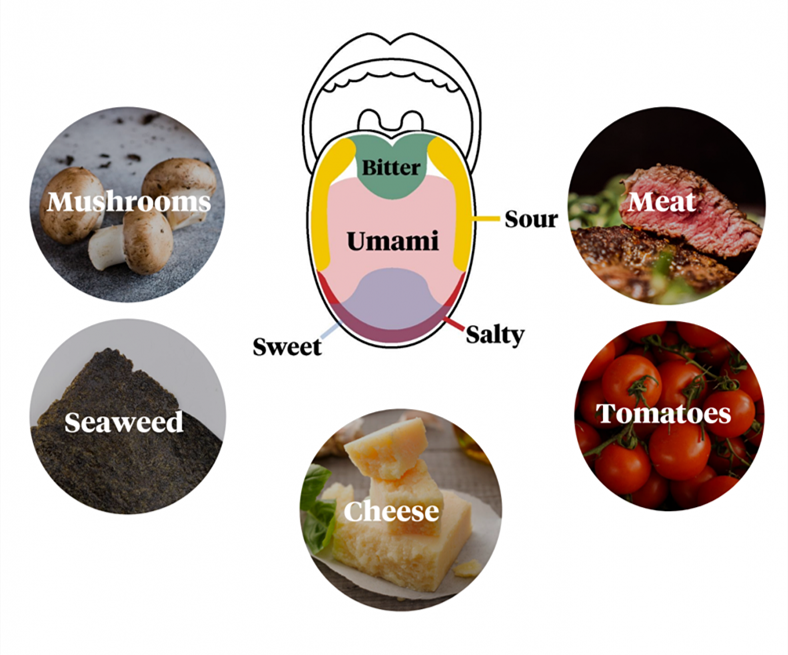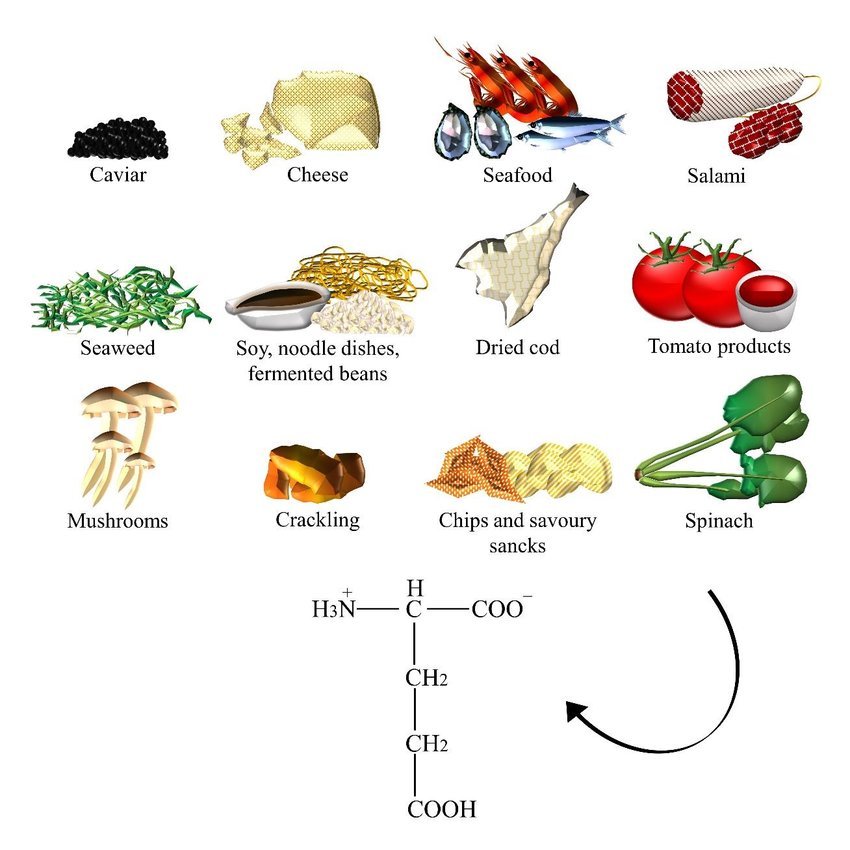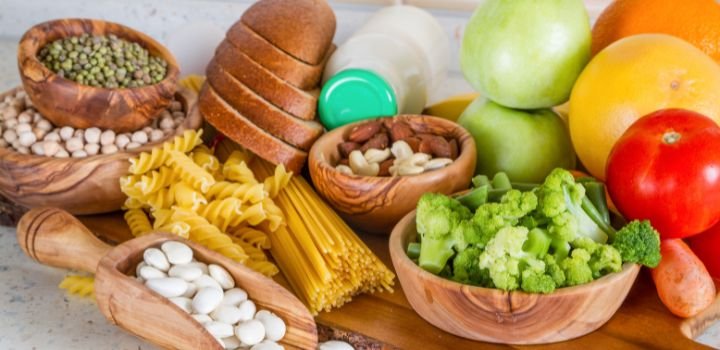Some media reports often criticize the use of Yeast extract as a condiment by the food-producing industry because of the presence of amino acid glutamate(glutamic acid). However, amino acid glutamate occurs in all natural protein-rich foods like mushrooms, tomatoes, kelps, soybeans, nuts, meats, and dairy products. Moreover, our body requires glutamic acid for the brain to function at an optimum level for improved mental alertness, making it an inherent part of our daily diet.
The misconception occurs when they relate the molecular structure of Monosodium glutamate( MSG) and Yeast extract. MSG is a highly concentrated form (100% sodium salt) of glutamic acid and has a bad reputation at Whole Foods Market because it is synthetic and can cause severe reactions in hypersensitive people. And many believe that yeast extract is also synthetic.
In fact, both are different. The natural foods chain clarifies that yeast extract is Mother Nature’s flavor enhancer and not an additive. It’s a completely natural ingredient that contains substantial amounts of glutamates (non-essential amino acids of glutamic acid), but nowhere near the MSG.
Components of Yeast extract
Yeast extract consists of a combination of proteins, peptides, amino acids, nucleic acids, B vitamins, minerals, carbohydrates, and other components that carry nutritional benefits.
Glutamate is one of the components present in every natural protein and is therefore also one of the many components of yeast extract. However, only about 5 % of glutamate is present in yeast extract。
Umami taste from the yeast extract

Yeast extract is widely used as a natural flavor enhancer to add depths of flavor to many processed foods, replacing glutamates and nucleotides. It provides diverse flavors including meaty, kokumi, salty, and Umami. The ‘umami taste’ from the yeast extract comes from glutamic acid.
Umami is now counted as next to sweet, sour, salty, and bitter – one of the five basic human taste sensations. It has a harmonizing effect and provides depth. Today, food formulators acknowledge umami as a pleasant savory taste sensation that “rounds out” or “completes” other flavors in food depending on the quantity of dosage. To round off a taste, a very small amount is used, and to achieve a bouillon flavor, the amount will be much higher.
You can also find the “umami” taste in proteins and protein-rich foods such as stocks, cooked meat broth, and a savory lasagne that’s made with glutamate-rich ingredients – minced meat, ripe tomatoes, and Parmesan cheese. When you consume glutamate-rich foods, you’ll perceive a delicious and pleasurable taste.
Yeast extract is also used in vegan products to give them the hearty “umami” taste and products with low salt content to provide depth to the taste and prevent anxieties about artificial additives. This could explain why foods with an ‘umami’ taste are so popular and are better accepted by the consumer.
Umami flavor from yeast extracts reduces salt usage
によると、 FDA report, the average American consumes nearly 3,400 mg of sodium per day. However, the daily intake of sodium limit is below 2,300 mg per day—1 teaspoon of table salt. The growing intake may lead to health concerns but people don’t want to eat foods without sodium as removing it from foods can leave a product seemingly flavorless or contain bitter or metallic flavor notes. The Umami flavor from yeast extracts plays a key role in compensating for the flavor impact of sodium removal. It helps mask metallic, bitter, and other off-flavors notes associated with salt alternatives.

Yeast extract and glutamate
酵母エキス is not glutamate; it contains natural glutamic acid (also known as amino acid glutamate) and is, by no means, responsible for foods containing high contents of glutamate.
Glutamate is made of glutamic acid (one of many natural amino acids present in every natural protein) and its ions and salts. Glutamate is a natural building block of proteins that’s found in protein-rich foods like meat, fish, pulses, etc. Therefore, glutamate is also one of the many components of yeast extract. The human body also produces glutamate in saliva and breast milk to execute a meaningful role in our metabolism.
The yeast extract is often criticized because of its natural 5% of glutamate content. Glutamate is an emotive term for some nutritionists and consumers. But what makes yeast extract special is that it is an isolated pure substance and contains the micronutrients vitamins and minerals of the yeast cell. In addition to lots of other amino acids, it also contains protein fragments, which gives the ingredient its savory flavor.
Glutamate naturally occurs in certain foods
Many consumers are also unaware that glutamate occurs naturally through the enzymatic ripening process in foods. The content of the amino acid glutamate (glutamic acid) in the yeast extract paste is less than the amount of tomato paste, peas, mushrooms, and a beef stock cube. One tomato contains 2x the amount of glutamate present in 200 ml of yeast extract flavored bouillon.

Glutamate is also found in appreciable amounts in matured Parmesan cheese and dishes like beef goulash or spaghetti bolognese. If you consume a portion of beef goulash and a portion of spaghetti bolognese with parmesan cheese, you’ll consume a glutamate content as high as 1,500 to 2,000 mg。
Moreover, ready meals like packet soups and bouillons are considered “glutamate bombs”, as they typically contain yeast extract. This is a fallacy advocated by the research conducted at Münster University of Applied Sciences. The research revealed that the packets of meat soups and chicken stock and other products seasoned with yeast extract contain the lowest amounts of glutamate. On the flip side, it was also revealed that tomato soup seasoned with MSG contained the most glutamate compared with soup with yeast extract. However, this high glutamate content is not solely due to MSG, but tomatoes naturally have high amounts of glutamate.
Thus, in this context, we can say that yeast extract is far more than just glutamate. It’s classed as a seasoning for the reason that it consists of a rich mix of amino acids, vitamins, and proteins from the yeast cell.
結論
Yeast extract is an falvor enhancer because it contains protein bound glutamic acid. It is a 100% natural ingredients and is celebrated among food manufacturers because it helps build richness and depth of flavor in a multitude of food products. And considering the increasing demand, ハイイースト is the most reliable producer and supplier of clean and healthy Yeast extracts for the food, beverages, and animal nutrition industry. We have a collection of different yeast extracts including, Standard Yeast Extract, Flavored Yeast Extract, High Nucleotide Yeast Extract, Kokumi Yeast Extract, and more.







